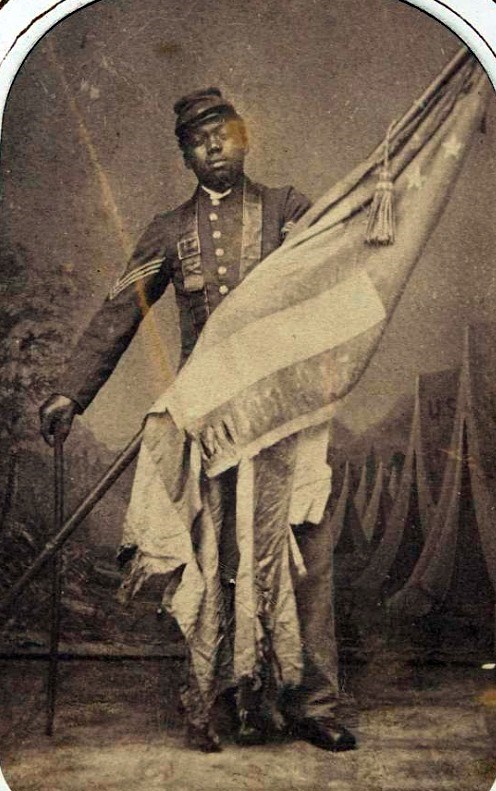Part of a series of articles titled Citizen Soldiers.
Previous: Croix de Guerre
Article

Smithsonian Museum of African American History and Culture Photo / Gift of Garrison Family in memory of George Thompson
June 14 is Flag Day, the anniversary of the date the Second Continental Congress adopted our national flag.
Flags, or colors, have traditionally been very important to the military. Military units would usually be issued with two flags, the United States flag, and a state or unit flag. Through the end of the 19th century, a regiment’s colors would be carried onto the field to provide a visual marker of their position on the field of battle.
Having a unit’s colors fall or be captured was considered a dishonor to the unit and could destroy soldiers’ morale. Therefore, many of the recognized acts of heroism in the Civil War were about colors and the color bearers.
One of the most famous color bearers of the Civil War was Sgt. William Carney of the 54th Massachusetts Volunteer Infantry, who saved the regiment’s national colors at the infamous Battle of Fort Wagner.
Despite being wounded multiple times, he led the way to the parapet of the fort, and then brought the flag back with him to safety when the 54th fell back. In his words, “Boys, I but did my duty; the dear old flag never touched the ground.”
For his bravery, Carney was the first Black recipient of the Medal of Honor.
Part of a series of articles titled Citizen Soldiers.
Previous: Croix de Guerre
Last updated: June 28, 2022